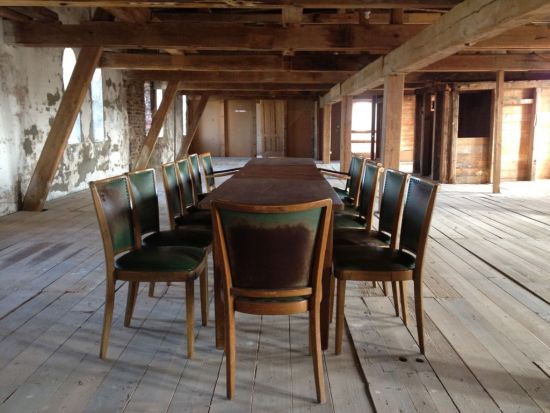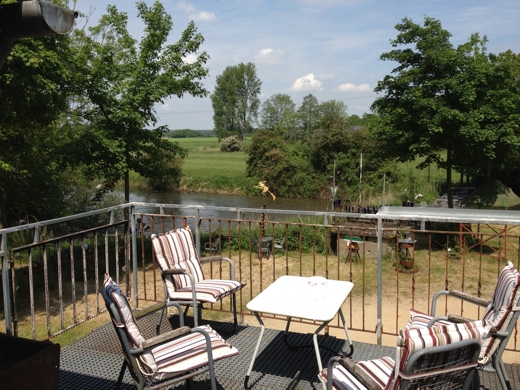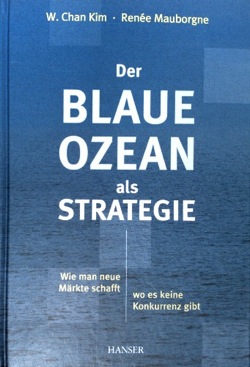Blue Ocean Strategy - Competitor-Free Market
he Blue Ocean Strategy describes a systematic way to create new markets, generate new demand and place the highest profitable growth in prospect.
Benno van Aerssen can assist in implementing your Blue Ocean Strategy.
This ingenious strategy tool demonstrates an extremely accessable way out of the 'Red Oceans', markets already saturated with the same procedures, and into a new realm of ideas, pushing forward a 'Blue Ocean' of fresh creativity.
Instead of dividing the existing, often shrinking demand with the competitors, this strategy is about blatantly increasing the demand and to break away from the competition.
Particularly efficient and effect is the combination of this strategy tool 'Blue Ocean Strategy' and the innovation culture method "FRIES" by Benno van Aerssen.

The authors of the "Blue Ocean Strategy", W. Chan Kim and Renée Mauborgne say that: "You can only try to beat the competition in one way, by not trying"
In the red oceans, companies try to outperform their rivals in order to secure a greater share of the existing demand.
The markets are getting more crowded, with decreasing profit and growth opportunities, on top of this, the products and services provided have become interchangeable commodities.
Blue oceans are new markets, creating new demand and enabling the highest profitable growth.
Special Features of the "Blue Ocean Strategy"
- It results in a higher success rate discovering new markets (blue oceans)
- Business’s are often fixated on their competitors’ affairs, occupying themselves with the question whether or not within their own company there is a cost-leader or differentiator.
- Innovation should not only be effected by the range of offers (technologicalinnovation) but also, by the range of demand (useful innovation). This way, you are reacting to the surplus supply.
- Useful innovation is the most important part of the Blue Ocean Strategy; it simultaneously provides differentiation and leadership cost, consequently leaving "Blue Oceans" competition less.
- The customer receives more value at a reasonable price and the supplier creates new demands that the company can operate cost-effectively.
- For the first time, the Blue Ocean Strategy provides a complete, practicalapproach, which benefits innovation.
- Enable yourself to systematically explore the new markets by being your own source of action and creativity.

New dimensions of use create new markets
This is especially relevant to most medium-sized companies, which currently seem to be caught in mediocrity. Over time, it has been found that the BlueOcean Strategy is also very well suited for use in medium-sized companies.
Even in the saturated markets, where there is definitely no space for yet another competitor, the SMEs of the blue ocean can generate an entire new 'utility curve' for the customers thereby unlocking their success and opening up their future.
W. Chan Kim and Renée Mauborgne
The history of business is bursting with ideas and examples of companies that have revolutionized their industry within a very short space of time and have broken out of the traditional competition, for example Ikea, Aldi, German
Wings, or Cirque du Soleil.
In the book "Blue Ocean Strategy" W. Chan Kim and Renée Mauborgne have essentially described how, with a dose of creativity, these business concepts can be systematically developed.
The Principles of the "Blue Ocean Strategy"
- Find new markets or invent new markets
- Dodge the competition
- To open up newly developed demand
- To level out the diabolical link between benefits and costs
- To consistently orientate yourself around differentiation and reduced costs

"Whoever only ever steps in the footsteps of another, shall never be able to over take them"
(An old proverb)
Whoever wants to build a new market first, they are then generally considered to be the first competition. They analyze their quality, price, service, delivery, marketing and sales activities as well as much more.
However, most companies do in fact take heed to this saying by habitually following in the same footsteps as their predecessors: the competitors are fighting over the same target groups.
Using the Blue Ocean strategy, together we will devise your business ideas, which, will radically differ, to those of your competitors, considered 'out of the box' and one that places the "Non- Customers" into focus.
You will conquer entirely new markets where previously you had not thought it possible.
Prominent Examples
Southwest Airlines
The oldest example is probably the story of the low-cost carrier Southwest Airlines who considered alternative industries and thought-out new benefits topotential customers.
Southwest Airlines positioned itself as a competitor to the car, not to other airlines and adapted its strategy to the resulting needs: Reduced prices due to the elimination of additional services, Improved checkin times and departure frequency enabled the customer to have a high cruising speed (aircraft) at a low price (comparable to a car).
In this case, what happened was the redefinition of the customer, although the service remained more or less the same. Here the customer is an ordinary commuter, not traveling on business or for holiday.
Apple
While the music industry at the time considered the Napster users as criminal thieves, Apple appreciated that to the potential costumers it had more to do with the fact that they had the possibility to simple enjoy their favorite music – and with a device that only had one control button.
The Body Shop
Another prominent example is the concept of The Body Shop, which contributed new functional and emotional benefits to the cosmetics industry.
The concept of having the most glamorous appearance of all cosmetics groups was ignored by the Body Shop.
The Body Shop shone through with a functional, unpretentious image combined with reduced prices and packages.
There has been an increased emphasis on natural ingredients, healthy lifestyle in addition to recognizing ethical issues. As a result, the Body Shop reached a new customer base and were also able to achieve very high cost
savings (about 85% of the costs went on packaging and advertising).
Nintendo
The latest example of a Blue Ocean Strategy is the success of the Nintendo wii games console, which was developed by Nintendo, in terms of a new and up until now, unknown target audience for video games. Nintendo
distinguishes itself with a novel control concept based on motion sensors, the resource-driven competition for graphics and their computing performance against other consoles, such as Microsoft's Xbox or Sony Play station.
Completely new target groups, including seniors, have since discovered the games console.
Nespresso
Another prominent example is the introduction of the Nespresso coffee system by the food giant Nestlé.
Starbucks
The concept of cafes has long been in existence, but it was Starbucks who first fashioned the idea of cafes into a lifestyle.
Thus, a new market was created by Starbucks, which previously did not exist.
Cirque du Soleil
Cirque du Soleil has created a new market for itself amongst the circus competition.
The most apparent feature is that unlike in conventional circuses, animals are not put on show. Instead, the audiences are engaged by the artist through a combination of the different elements to entertainment such as opera, ballet and rock music.
The music is played exclusively live. Target groups are no longer primarily families with children, but also adults who are willing to pay a higher admission fee for quality entertainment.
